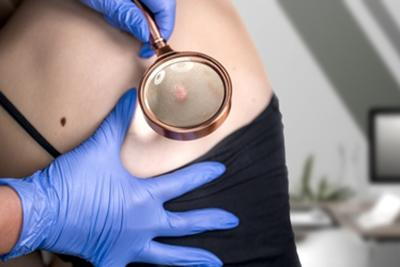Understanding Skin Cancer: Types, Symptoms, and Risk Factors
posted: Sep. 16, 2024.

Renowned New Jersey Dermatologist Discusses Skin Carcinoma
Dr. Patricia McCormack is highly rated, experienced, skilled, and board-certified in dermatology. She directs her three dermatology offices, Patricia McCormack Dermatology for Adults and Children, in Point Pleasant Beach, NJ, Linden, and Staten Island, NY.
The services our doctor provides include all facets of skin conditions, including all skin cancer types, trending treatment options, and surgical intervention for,
- Medical/Cosmetic
- Adult
- Pediatric
- Skin carcinoma
- Mohns surgery
Our doctor wants to help you understand skin carcinoma types, symptoms, and risk factors.
Skin Carcinoma Types
- Basal cell cancer, the most common type in fair-skinned people, is flesh-colored, pearl, or pinkish bump; avoid indoor tanning or excess outdoor sun; targeted areas, head, arms, neck, abdomen, legs, and chest; grows deep into the skin, penetrating nerves and bones.
- The second most common skin cancer is squamous cell. Light-skinned people are at risk—a bump presenting as red and scaly or a sore that heals and reopens. Avoid too much sun; target the ears, face, neck, arms, chest, and back. It grows deep into the skin; immediate treatment is vital to avoid developing deep or spreading.
- Actinic Keratoses, dry and scaly precancerous growths of skin patches, need immediate treatment; too much sun, fair-skinned people are at risk, targeting the head, neck, and forearms.
- Melanoma is a deadly cancer that begins as a mole that looks different and tends to spread quickly; immediate treatment is vital.
Patricia McCormack Dermatology for Adults and Children, in Point Pleasant Beach, NJ, explains that you can watch out for this skin cancer using the ABCDE warning signs: (A) symmetrical-(B) Irregular borders. (C) Multiple colors, color changes, uneven color. (D) Greater than 1/4 inch. (E) Change in size, itchy, tender, bleeding, nonhealing sore.
- Dermatofibroscaroms protuberans
- Merkel cell carcinoma
- Sebaceous carcinoma
Treatment-Surgical Treatment Options
The treatment for skin carcinoma depends on the type of cancer. The following are the most common treatment options for skin carcinoma. Once our doctor determines what kind of carcinoma you have, our doctor determines your treatment plan.
- Surgery (excision, simple excision, wide excision, and shave excision): Mohs surgery, cryosurgery, lymph node biopsy, reconstructive surgery.
- Topical ointment
- Photodynamic therapy
- Topical chemotherapy
- Immune response modifier
- Chemotherapy
- Radiation therapy
- External beam radiation therapy (EBRT)
- Intensity-modulated radiation therapy (IMRT)
- TomoTherapy
Seeking an Excellent Dermatologist in NJ, NY?
Our doctor recommends a skin cancer checkup at least every year, and if you have a history of skin cancer, you need a skin checkup every six months.
Call Dr. McCormack today at these locations for your skin checkup and consultation. Our doctor is eager to meet you and help you keep your skin in excellent condition.
- Point Pleasant Beach, NJ: 732-295-1331
- Staten Island, NY: 718-698-1616
- Linden, NJ: 908-925-8877
This website includes materials that are protected by copyright, or other proprietary rights. Transmission or reproduction of protected items beyond that allowed by fair use, as defined in the copyright laws, requires the written permission of the copyright owners.

